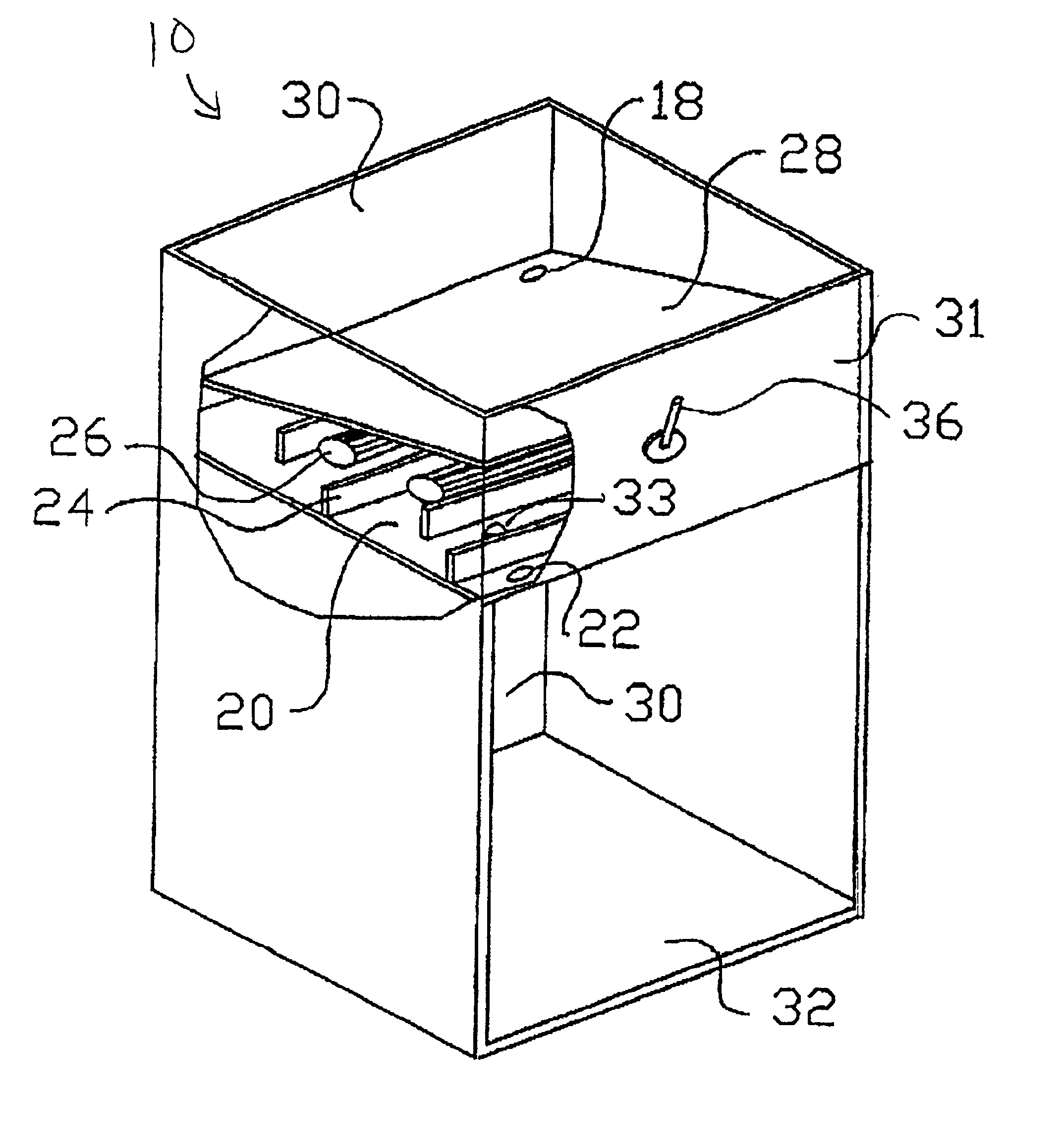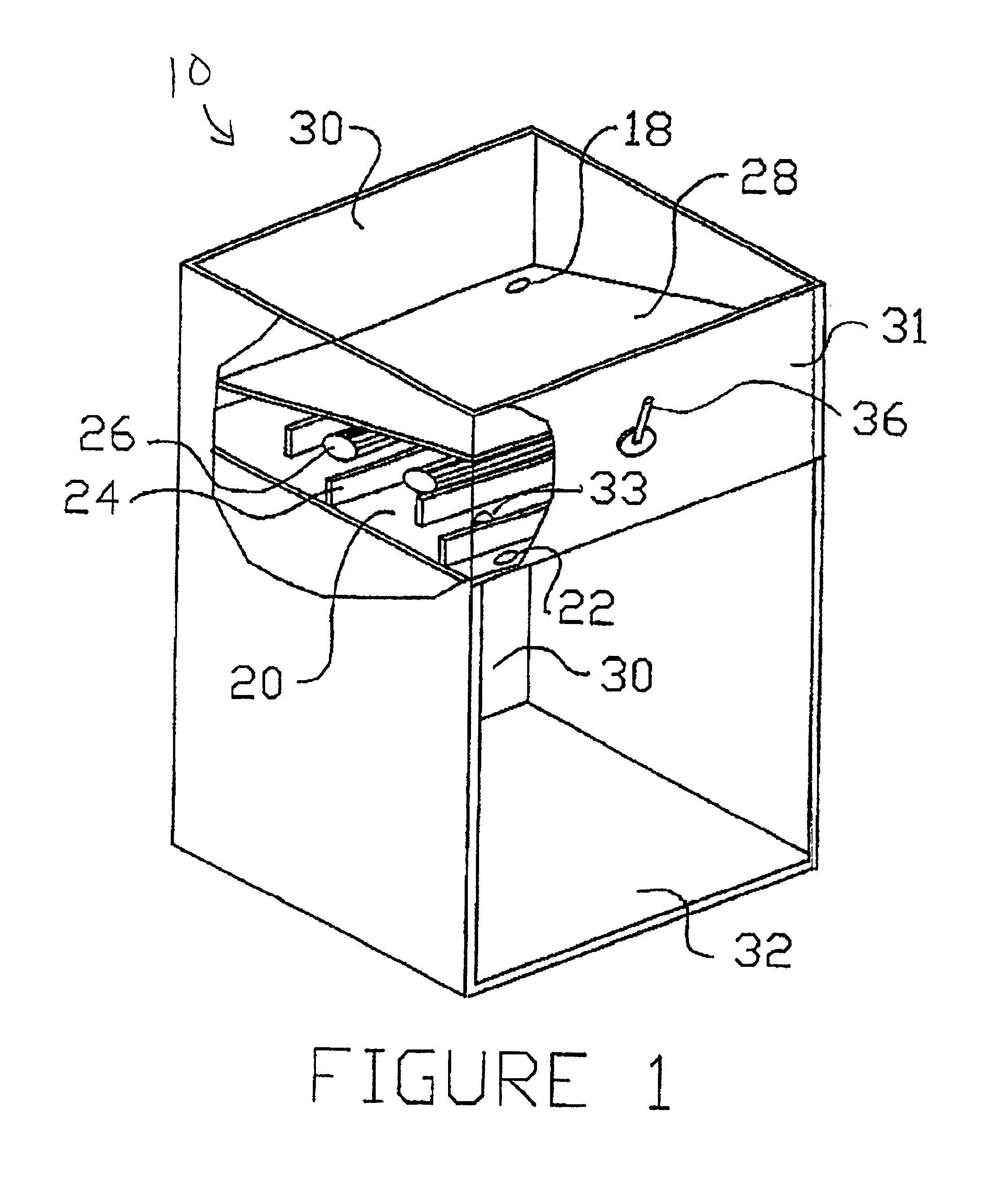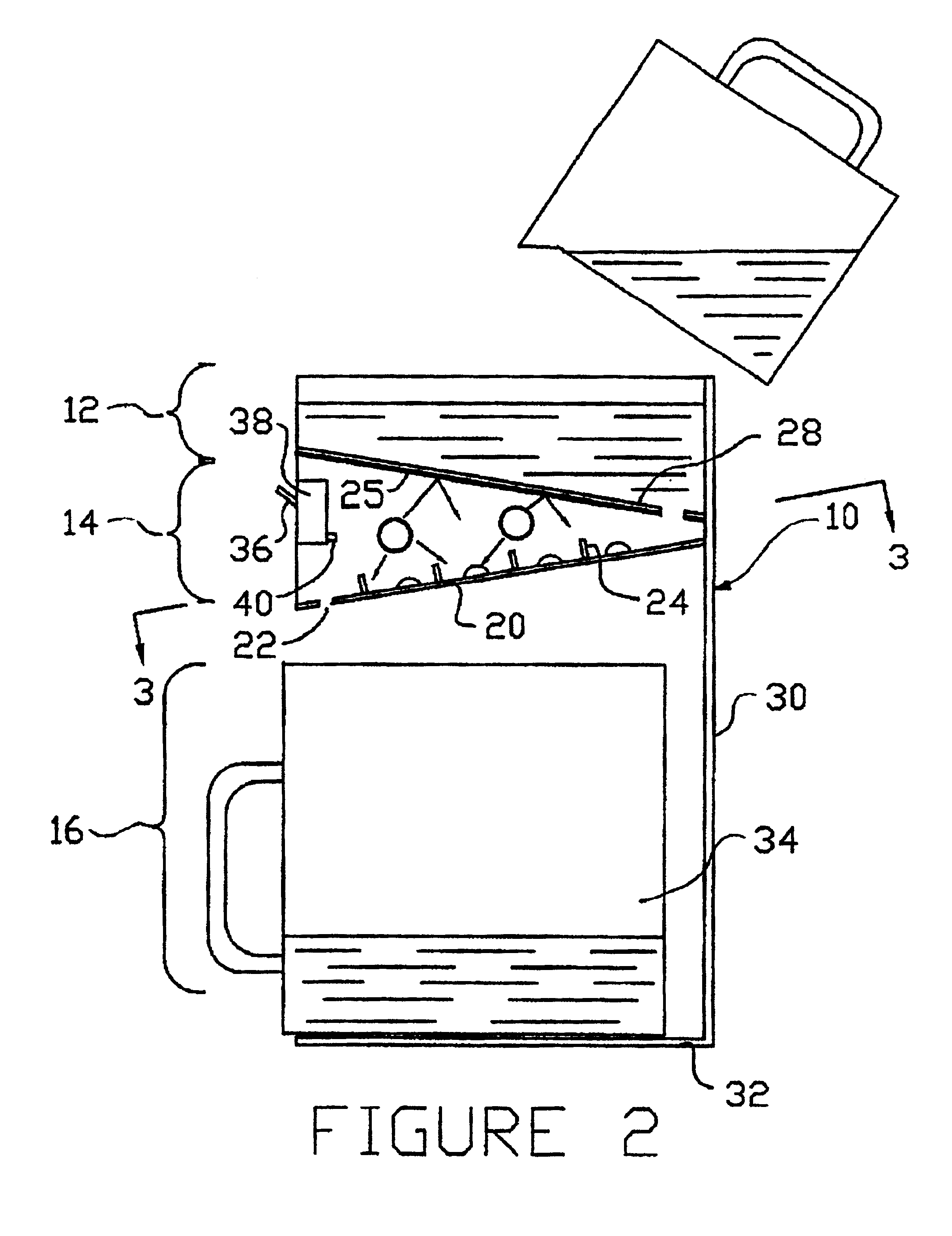Ultraviolet treatment for aqueous liquids
- Summary
- Abstract
- Description
- Claims
- Application Information
AI Technical Summary
Benefits of technology
Problems solved by technology
Method used
Image
Examples
examples
In a first trial, an apparatus similar to that illustrated in FIG. 1 was used, but in this case, there were no protrusions in the troughs (channels) of the apparatus. Distilled water was spiked with Bacillus subtilis spores to give a count of 39,000 CFU's (colony forming units) per ml. The water was poured through the apparatus at a rate of 800 ml / min. The effluent (liquid emerging from the treatment area of the apparatus) had a spore count of 2,200 CFU's per ml. In a comparative run, the same experiment was carried out using the apparatus as illustrated in FIG. 1, that is, four evenly spaced semi-circular protrusions (the protrusions were 0.5 cm in height in these examples) were located in the centre of each channel. In this case, the effluent had a spore count of 330 CFU's per ml.
In a second trial, deionized water was spiked with Crypto sporidium parvum to a concentration of 10,000 per ml. The water was poured through the apparatus illustrated in FIG. 1, again at a rate of about 8...
PUM
| Property | Measurement | Unit |
|---|---|---|
| Fraction | aaaaa | aaaaa |
| Fraction | aaaaa | aaaaa |
| Thickness | aaaaa | aaaaa |
Abstract
Description
Claims
Application Information
 Login to View More
Login to View More - R&D
- Intellectual Property
- Life Sciences
- Materials
- Tech Scout
- Unparalleled Data Quality
- Higher Quality Content
- 60% Fewer Hallucinations
Browse by: Latest US Patents, China's latest patents, Technical Efficacy Thesaurus, Application Domain, Technology Topic, Popular Technical Reports.
© 2025 PatSnap. All rights reserved.Legal|Privacy policy|Modern Slavery Act Transparency Statement|Sitemap|About US| Contact US: help@patsnap.com



